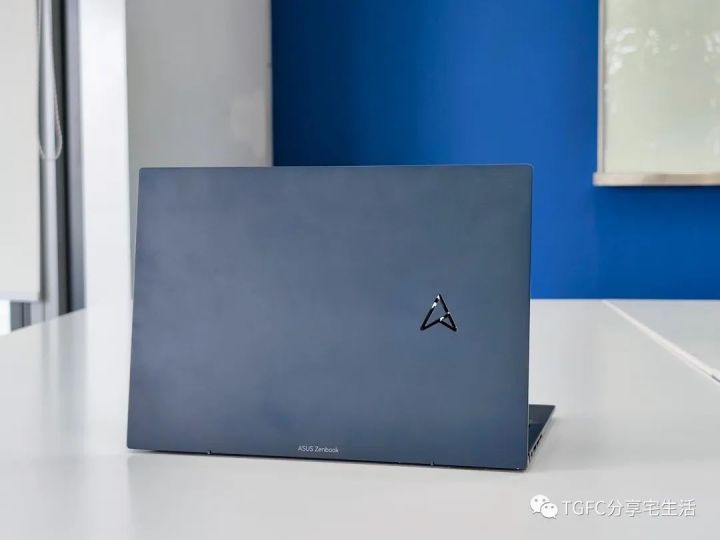I paid attention to this laptop mainly because earlier this year, Su Mama released a satellite, claiming that the 6800U processor this year uses TSMC’s 6nm technology. It is not only low in power consumption but also high in performance. The gaming experience at 1080p will be twice as good as last year’s integrated graphics. With the help of FSR, it can achieve 60fps in 1080p AAA games.
Although I know that PowerPoint presentations are all exaggerations, the RDN2 architecture GPU is used even in the PS5 and can even support ray tracing. So no matter how much it’s hyped, I need to buy one and try it out to see the true capabilities of the 6800U processor.
However, good things come to those who wait. In the first half of this year, Intel was also aggressively promoting its 12th generation low-power CPUs. Under pressure from Intel, laptops with the 6800U processor were delayed. It wasn’t until May of this year that ASUS and HP released two laptops using the 6800U processor. HP’s version is a 1.3kg 13-inch gaming laptop, while ASUS released the Zephyrus X13.

Choosing between these two laptops was almost a no-brainer. The ASUS model features a 13.3-inch 2.8K 16:10 OLED screen with a maximum brightness of 600 nits, weighing only 1kg. It has 6400MHz DDR5 memory and was initially priced at 5999. On the other hand, HP’s version has a maximum brightness of 400 nits with a 1920×1200 LCD screen, 4800MHz DDR5 memory, weighs 1.3kg, and was initially priced at 5799. With just a 200 RMB price difference, I definitely chose the ASUS laptop for its lighter and thinner design, better memory performance, and higher-quality screen. However, the ASUS model is not without its flaws. It only has 3 USB-C ports and a headphone jack for connectivity. The power button’s location and feel are poor, and it includes a fingerprint sensor but lacks a Windows Hello face recognition camera, among other things.

Nevertheless, even with these drawbacks, the Zephyrus X13 is currently only available for pre-order on JD.com, and the price has already increased to 6799. In contrast, the HP model is readily available for purchase at 5800.
I managed to get it for 5899 after applying a 100 RMB discount coupon, which is 900 RMB cheaper than the current price. So, buying a laptop on its initial release still proves to be the most cost-effective option this year. It’s absurdly popular.
In terms of user experience, this laptop gives me a strong sense of luxury. Whether it’s the screen’s visual experience, the craftsmanship of the chassis, or the slim and lightweight feel, it doesn’t feel like a laptop in the 6000 RMB price range, but rather more like an 8000 to 10,000 RMB device.


In terms of the screen, it’s my first time using an OLED display on a laptop, and the overall experience is excellent. With its 13-inch 2.8K resolution, wide color gamut, and impressive black levels, although it doesn’t match the OLED TV at home, it’s much better than a regular LCD laptop screen.
The screen can also be opened up to 180 degrees, allowing the laptop to be set up vertically with a stand and an external keyboard. The only regret is that it has a refresh rate of only 60Hz; it would be unbeatable if it were 120Hz.

In terms of gaming, the 6800U processor didn’t disappoint me. It easily scores over 2200 in Time Spy, and with such a slim body, the performance is even more aggressive than the bulky HP gaming laptop. Although the Time Spy score of 2200 might not seem high, it’s already comparable to the performance of a GTX 1050 Ti. In actual gaming, with a resolution of 1080p, low settings + FSR, it can achieve a stable 60Hz. Keep in mind that this is an integrated GPU with a combined CPU+GPU power consumption of only 28W. Even the handheld gaming devices using the 6800U processor this year have even higher scores, which is something to look forward to.

As for the CPU performance, there’s not much to say. It handles daily office tasks with ease, and the battery life is a pleasant surprise. AMD’s power efficiency advantage is even more evident in low-power CPUs. After using it for a whole morning of meetings, it only consumed 20% of the battery. Taking it out for a whole day of use is absolutely no problem.
Furthermore, AMD’s compatibility with Windows 11 is excellent. The laptop can be easily turned on and off, and I haven’t encountered any overheating issues when closed, which I experienced with Intel-based laptops from the 8th to 11th generation. So, that’s another positive point.

As for the drawbacks, this laptop has a few. Firstly, having all USB-C ports can be a bit inconvenient. Secondly, there is only one slot for an SSD, and when I bought it, the maximum available was 512GB. So, if I want to upgrade, I’ll have to replace it instead of adding another one. Thirdly, the magnesium-aluminum alloy body is a bit soft, and the screen design causes some paint chipping at the bottom edge after over a month of use.
In summary, my overall evaluation of this laptop is that it’s the best ultraportable laptop of this year so far. Even when compared to the newly released M2 MacBook Air, its compact size and weight, excellent screen quality, performance that goes toe-to-toe with the M2, and a price around 6000 RMB make it hard to find a better ultraportable laptop this year.



